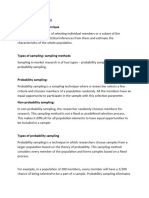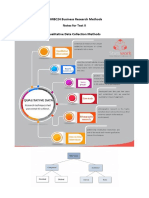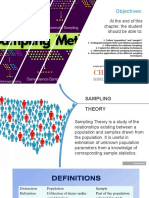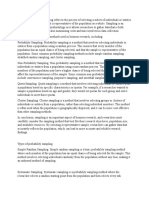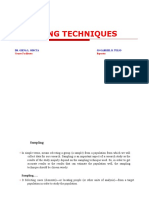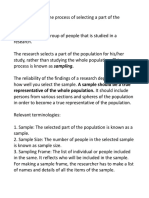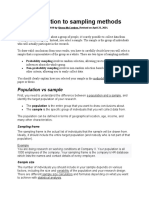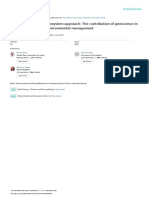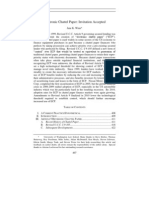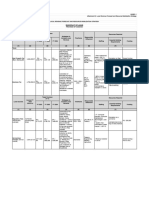0% found this document useful (0 votes)
8 views12 pagesAssigment On Sampling
The document discusses various sampling techniques essential for conducting valid research, emphasizing the importance of selecting the appropriate method for the specific research question. It outlines the differences between probability and non-probability sampling methods, providing examples and advantages of each type. Additionally, it addresses potential biases in sampling and offers guidance on how to choose the right sampling method based on research goals.
Uploaded by
Project DepartmentCopyright
© © All Rights Reserved
We take content rights seriously. If you suspect this is your content, claim it here.
Available Formats
Download as DOCX, PDF, TXT or read online on Scribd
0% found this document useful (0 votes)
8 views12 pagesAssigment On Sampling
The document discusses various sampling techniques essential for conducting valid research, emphasizing the importance of selecting the appropriate method for the specific research question. It outlines the differences between probability and non-probability sampling methods, providing examples and advantages of each type. Additionally, it addresses potential biases in sampling and offers guidance on how to choose the right sampling method based on research goals.
Uploaded by
Project DepartmentCopyright
© © All Rights Reserved
We take content rights seriously. If you suspect this is your content, claim it here.
Available Formats
Download as DOCX, PDF, TXT or read online on Scribd
/ 12








